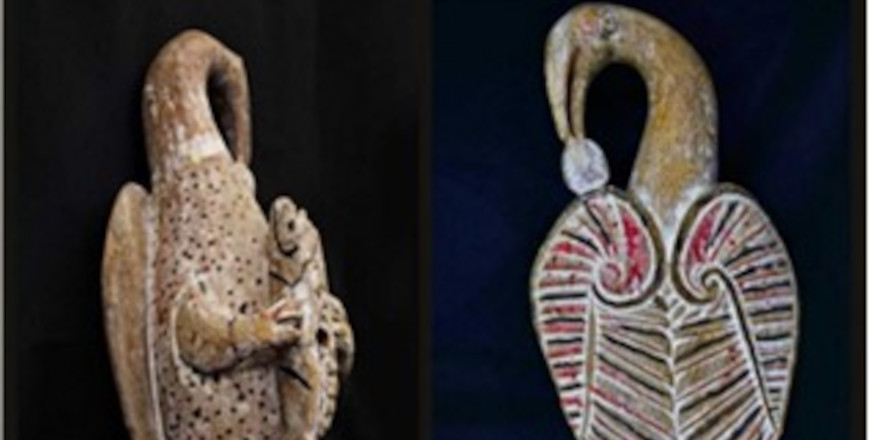I retired from the full-time workforce in July 2016, and I had always imagined I would like to spend my retirement years undertaking some voluntary church work – “finding a place for service in retirement”. But I had no idea where this vague idea would lead me. As it happened, I was then employed for […]
I retired from the full-time workforce in July 2016, and I had always imagined I would like to spend my retirement years undertaking some voluntary church work – “finding a place for service in retirement”. But I had no idea where this vague idea would lead me.
As it happened, I was then employed for 13 months as a Project Officer for the LCANZ. After that interesting and absorbing work ended in late 2017, I was ready for a new challenge.
Out of the blue, in March 2018, Glenice Hartwich rang – at that time Glenice was Assistant to the Bishop – International Mission. “Would I consider undertaking a 3-month contract to investigate and advise the LCANZ’s International Mission Committee on the future of its valuable collection of Papua New Guinea artefacts?” What an exciting challenge!
This is a brief account of ‘Wantok Place’, the new museum that eventually resulted.
A new museum for the LCANZ
Wantok Place is the recently opened Museum of Papua New Guinea Artefacts. It is owned by the LCANZ and it houses a collection of artefacts, some of them quite rare, and some of them culturally and financially significant. It also traces the history and work of Australian missionaries and lay-people who worked in the Lutheran mission fields of PNG (and SE Asian countries) from Pastor Johann Flierl, arriving in Finschhafen in 1886, to post-independence.
Wantok Place is important because:
- it preserves aspects of culture and mission in PNG and beyond which would otherwise become lost or forgotten;
- it shows that Lutheran missionaries respected and admired the people and their cultural traditions; and
- it is a visible sign of the LCANZ’s ongoing partnership and friendship with partner churches in PNG and South-East Asia.
The origins of the museum
Wantok Place has its origins in another museum and location. The collection was previously called the Louise Flierl Mission Museum and it was housed in Hahndorf from 1998 to 2018.
Christel Metzner, supported by her husband, Rev Dr Ulf Metzner, former LCA Mission Director, founded this museum, putting the collection together from artefacts that had been stored in the former LCA Church House in O’Connell Street, North Adelaide, and from other sources.
The museum was named after Louise Flierl, who served with her husband, Pastor Johann Flierl, in pioneering missionary work in PNG for 42 years. Pastor Flierl was the first Australian Lutheran missionary in PNG – he arrived at Simbang Harbour, near Finschhafen in 1886.
Christel located the collection that she formed in an old stone building in Hahndorf known as the Old St Paul’s Church. In recent years, the number of visitors to the museum had declined, and the building needed updating and repair. St Paul’s Church then decided to sell the building, prompting the phone call made by Glenice Hartwich back in March 2018.
A new home in North Adelaide
The 3-month investigation into the future of the museum resulted in the establishment of a project to relocate the collection to a new home. I was appointed the project manager.
Two fundamentally fortunate ‘finds’ followed – a new premises for the museum, and a new curator.
The eastern wing of the Lutheran Laypersons’ League (LLL) building became available. The building already had suitable space, security, and air-conditioning. However, modifications had to be undertaken to convert the former office space into a museum display space.
The second fortunate ‘find’ was in the person of Dr Barry Craig, former Senior Curator Foreign Ethnology at the SA Museum. Barry had extensive experience as an anthropologist and curator in PNG, and we were delighted when he readily agreed to be our consulting curator.
Setting up the museum
The new layout of the museum was designed along geographical mission regions:
- PNG – the coastal areas of the Huon Peninsula, then the highland areas, with special features for Menyamya and the Sepik region
- South-East Asia mission partners – Malaysia, Singapore, Indonesia, Thailand, Cambodia, and Myanmar.
Funding was obtained from the Lutheran Overseas Partner Churches Special Fund for new interpretive signage.
A new name, Wantok Place, was chosen for the museum. The new name is intended to honour PNG culture through use of the Pidgin word ‘wantok’ (translating to ‘one-talk’ in English), which means a speaker of the same language, friend, or partner, with shared values.
The artefacts
About 1000 artefacts are on display. Photos and books are also displayed. These include bows, arrows, shields, spears, sorcery and magic bundles, bullroarers, flutes, masks, tools, clothing and jewellery, pots, drums, conch shells, bilums (woven bags) and storyboards.
Photos and books are also on display. Some additional artefacts not on display are of tourist quality and we intend to offer them for sale in the future.
And finally, the museum houses a growing library of books and printed material, which are a valuable resource for research.
Opening Hours
The museum is open to the public on Wednesdays from 10am to 4pm, staffed by enthusiastic volunteers.
The museum has also become an informal gathering place for former PNG mission field workers and visitors, where reminisces can be shared and memories relived – providing a valuable service to these people.
We would love to have you visit sometime soon! And any financial support is gratefully received.
The museum is open Wednesdays from 10.00am to 4.00pm. Bookings for Wantok Place can be made for group visits, by emailing wantok-place@lca.org.au or by phoning the museum manager, Timothy Pietsch, on 08 8267 7410. Visit the website for more information at www.lca.org.au/wantok-place


0 Comment